How do Portuguese people celebrate Christmas and New Year?
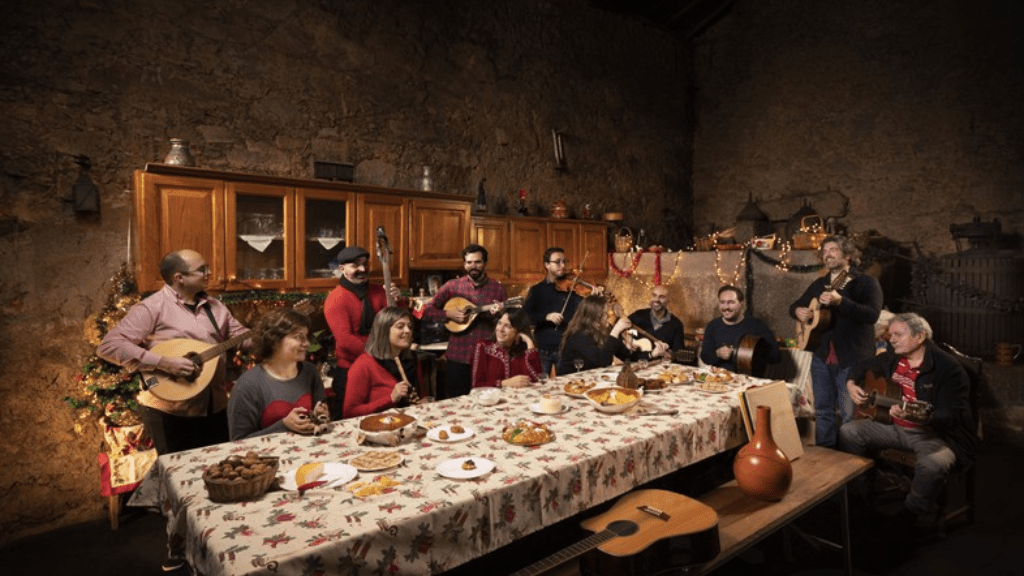
If you are the kind of traveler who enjoys taking a trip around Christmas time, other European destinations popular because of their outdoor Christmas markets may come to mind before you even think of booking a flight to Lisbon. But, what if you actually knew how to embrace the spirit of the holidays learning more about Portuguese Christmas folk heritage? Then you may actually be able to take full advantage of a stay in our country during December, while enjoying some truly unique traditions.
Whether you are a religious person or not, the spirit of Christmas in Portugal is best materialized by spending time with the family. If you are in a couple and your relatives come from different parts of the country, it wouldn’t be unheard of to spend Christmas Eve with one side of the family, and Christmas day with the other – good thing we have a small enough country which easily allows for this kind of movement. The following year you’d normally rotate, as who you get to spend the holidays with is a big deal and you wouldn’t want to hurt anyone’s feelings.

For the longest time, the vast majority of restaurants would shut down on Christmas Eve and commercial establishments would be closed on the 25th of December. While most people do enjoy a day off work on Christmas Day, it is more and more common to find open restaurants, in case you decide to have your Christmas Eve supper or Christmas lunch out, particularly within urban centers and in restaurants that are part of hotels. This is great for international travelers who choose to visit us this time of year, but also for some native families who’d rather spend quality time out without having to worry about preparing all the food and cleaning up at home. For this same reason, Christmas meals and assorted dessert baskets for take-away are becoming increasingly more common and affordable.
Like in many other parts of the world, Portuguese kids grow up believing in Santa Claus, who comes on the night of the 24th of December while you are asleep, leaves presents underneath the lit up Christmas tree, and guarantees that Christmas morning is one of the most joyous of the year!
Christmas traditions around Portugal
We have written extensively about the most typical Portuguese Christmas foods enjoyed during the holidays, but not only traditions span way beyond what ends up on the table, they also change according to regions of the country.
Portuguese Christmas food
On Christmas Eve supper, a boiled dinner with salted cod, potatoes and vegetables (bacalhau com todos) is the most common recipe across Portuguese households.
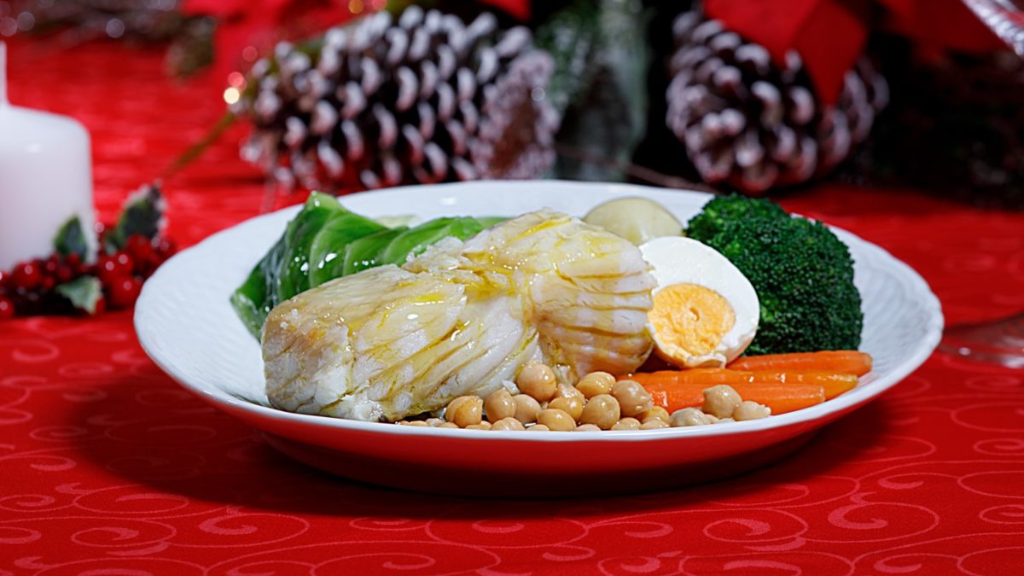
But up north, for example, octopus is served alongside bacalhau, even contesting its supremacy on the table or excluding it altogether. The northern regions of Minho and Trás-os-Montes have strong historical links with the province of Galicia, in neighboring Spain. Salted cod only became a Christmas tradition after the 30s, when it was heavily promoted by Salazar’s dictatorial regime as part of the national identity. Before that, northern folks were already enjoying octopus for Christmas Eve supper and, even after all the impositions and limitations of the Estado Novo regime, they kept on enjoying their own tradition, even if that meant smuggling the octopode from across the border. If the forbidden fruit tastes the sweetest, the forbidden octopus also tastes the best.
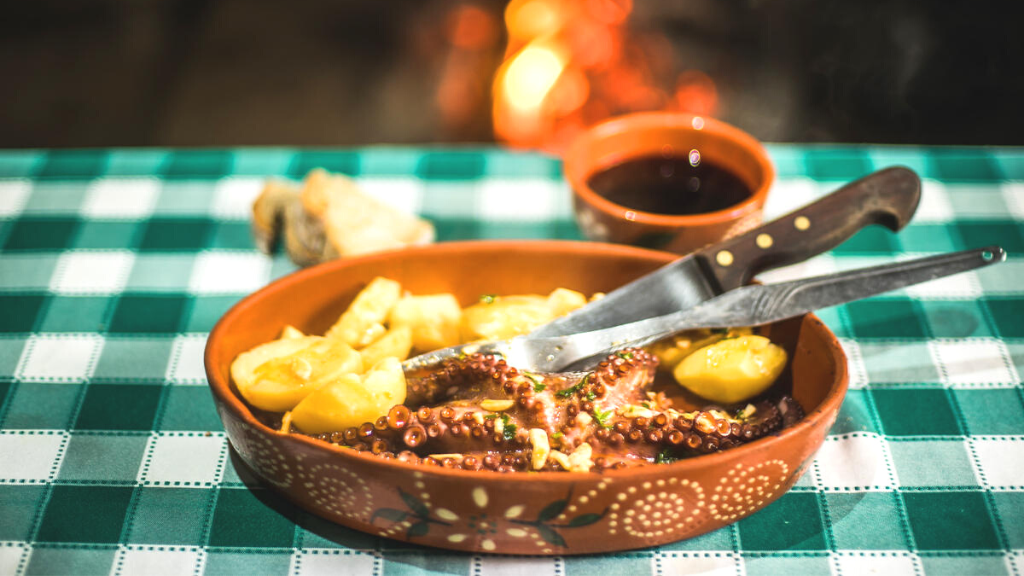
Going to the opposite end of the country, the region of the Algarve down south, we see how the proximity with the ocean translates into the delicacies which make it to the table on Christmas. Algarvians enjoy shells such as clams on Christmas, often steamed inside a cataplana, or even on surf and turf dishes along with chicken, which is common in a region that sure knows how to mix the best of the land and the sea in one given recipe.
Interestingly, when we think about Portuguese Christmas foods, we tend to focus on what’s most broadly eaten in the mainland, when traditions in the Portuguese Atlantic archipelagos of Madeira and Azores do differ. In the Azores, for example, many families will enjoy roast chicken and octopus stew for Christmas Eve supper and roast meat for Christmas lunch. On the other hand, in Madeira, carne de vinha d’alhos (the predecessor of Indian vindaloo) is also a Christmas favorite. The Portuguese mainland and the islands tend to have more in common when it comes to Christmas desserts, but even then the islands stand out with some exotic options such as passion fruit pudding in Madeira.
On the 25th of December, Christmas day, it has historically been common to prepare a dish with the leftovers from the previous meal, consisting of sauteed shredded cod, potatoes and all the remaining vegetables in olive oil with garlic. This useful recipe called roupa velha (that is, old clothes) is nowadays frequently overlooked in favor of a whole roasted turkey (often stuffed with other minced meats and Portuguese cured meats), a more obvious symbol of affluence.
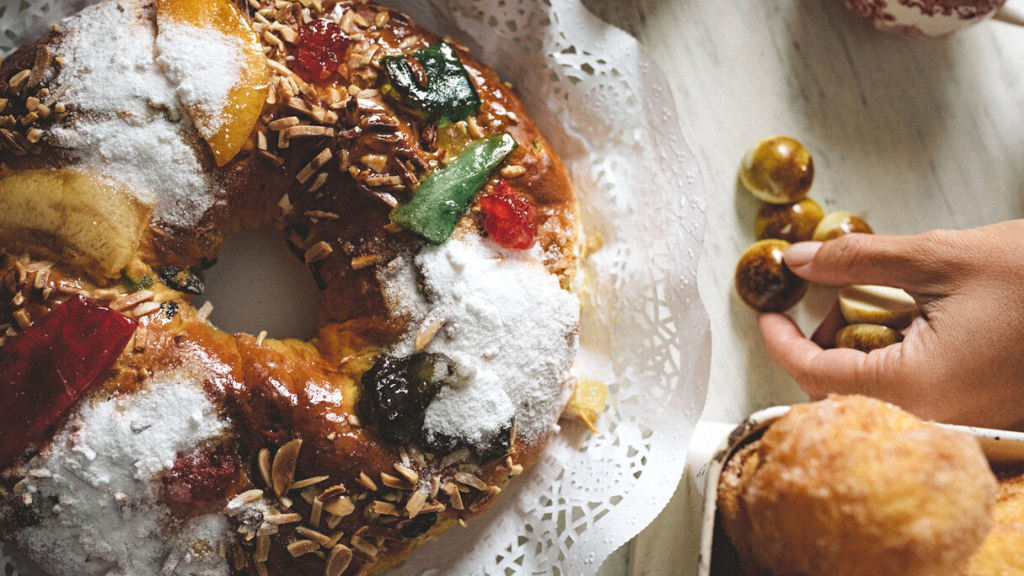
No matter what is enjoyed as a main meal on Christmas Eve and Christmas day, Portuguese Christmas food surely reaches its greatest expression when it comes to dessert. In fact, during the holidays, we don’t do dessert, but rather a dessert table! The plethora of typical Portuguese sweets enjoyed for Christmas includes a variety of cinnamon and sugar dusted fritters, bolo rei (pictured here) and bolo rainha (crown shaped cakes inspired on the French gallete des rois about a century ago), creamy puddings like aletria, egg yolk rich confections, and other regional specialities.
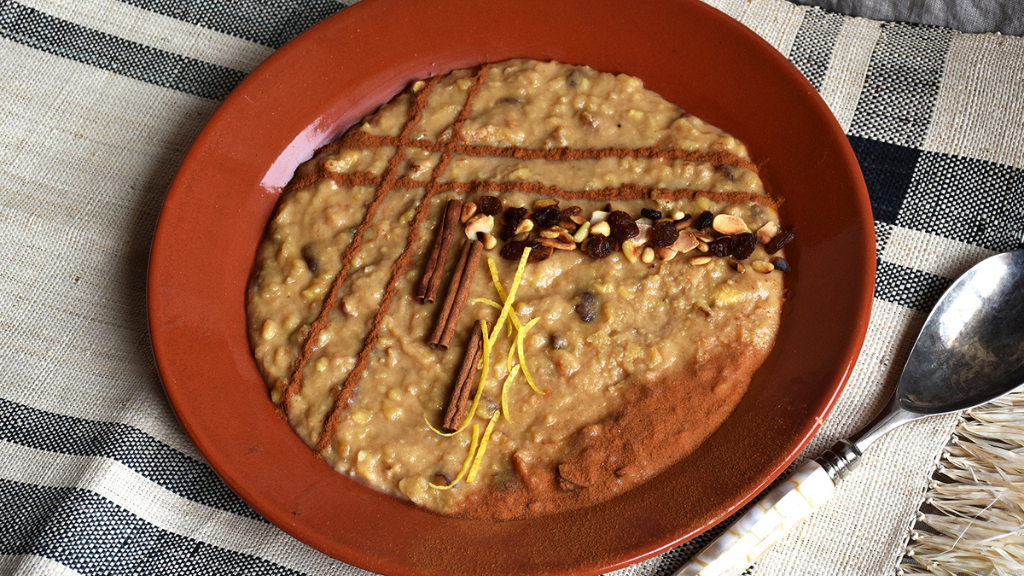
Read more about the most typical Christmas dishes and desserts in Portugal here.
If in the north you will commonly get to eat formigos or mexidos de Natal, a sort of sweet scramble with eggs, bread, nuts, Port wine and honey (pictured here), in the Alentejo Christmas isn’t really Christmas without a sweet version of migas, called migas doces, in this case prepared with old bread, milk, eggs and sugar. It is very common to sip Port wine and other Portuguese fortified wines during and after dessert, as you also munch on a variety of dried fruits and nuts which are usually on top of the table for several days around Christmas.
Portuguese Christmas markets and other Christmas decorations
Portugal isn’t as big on Christmas markets as other European destinations such as Germany or Switzerland. But our cities, and in particular Lisbon, is in recent years catching up at a speed and putting together cozy stalls with food, drinks, things to do and plenty of eye-catching decorations all around.
To get immersed in the spirit of Christmas while in Portugal, we recommend visiting Óbidos Christmas Village, perhaps the most magical of all Christmas destinations in our country. Just about one hour away from Lisbon, Óbidos Vila Natal runs all December long and brings together enchanting decorations, fun things to do like ice-skating and carousels, live music performances, a living nativity scene, games, theater, storytelling, and so much more. Of course, this is also an entertaining place where the younger ones can get to meet Santa Claus or, as we know him around here, Pai Natal.
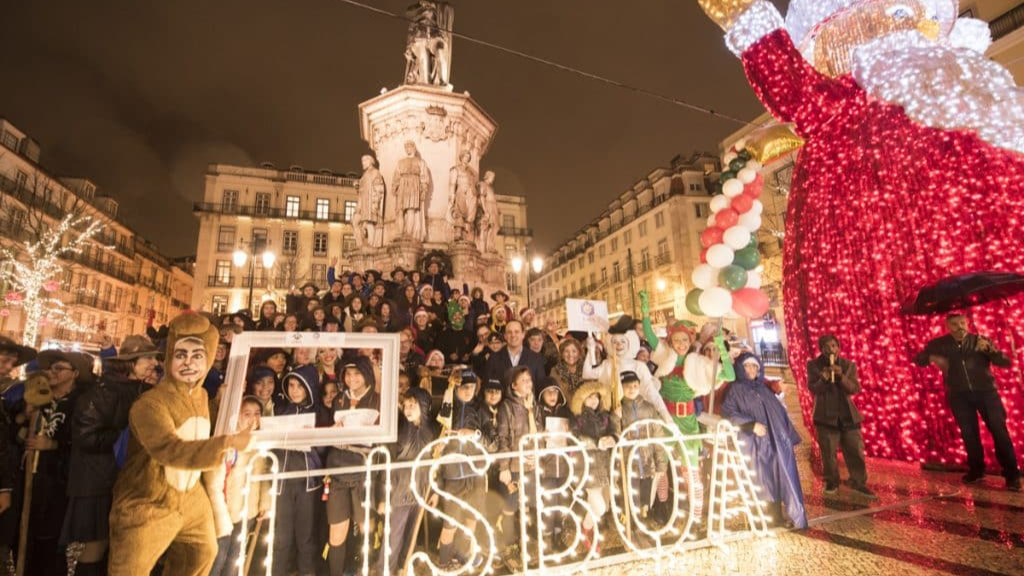
Market or not, most Portuguese towns will put up Christmas lights and even some remarkable Christmas trees. Lisbon actually has Europe’s tallest Christmas tree, which has been highlighted in the Guinness World Records book since 2005.

Religious Christmas in Portugal: nativity scenes and the rooster’s mass
As mentioned above, not everyone embraces the religious side of Christmas, but we have to acknowledge that, in its inception, this is a religious celebration, and this still matters to a considerable number of Portuguese people.
Besides other colorful Christmas decorations, nativity scenes known in Portuguese as presépios are still popular, inside homes besides the Christmas tree, and at a larger scale in town plazas and even street roundabouts. Nativity scenes include baby Jesus (in some cases only added to the presépio on the 25th of December after the rooster’s mass, officially when Christ was born), Mary and Joseph, and also the three wise men, village people like shepherds, farmers or folks carrying water containers, as well as various animals. If you are to do a presépio at home in a very traditional manner, you’d normally decorate the scene with real moss, but this is discouraged nowadays for environmental preservation reasons. If there was any doubt about how much the Portuguese care about nativity scenes, it’s worth noting that, back in 2012, the town of São Paio de Oleiros entered the Guinness Book of Records for hosting the largest moving nativity scene in the world.
Besides setting up the stage of Jesus’ birth in nativity scenes, the greatest expression of the original religious side of Christmas in Portugal is materialized on Christmas Eve at midnight, during the rooster’s mass. Catholics gather to pray and to kiss the statue of baby Jesus at the supposed time of his birth. This type of congregation is also the perfect excuse to bring together neighbors and friends and wish each other happy holidays.
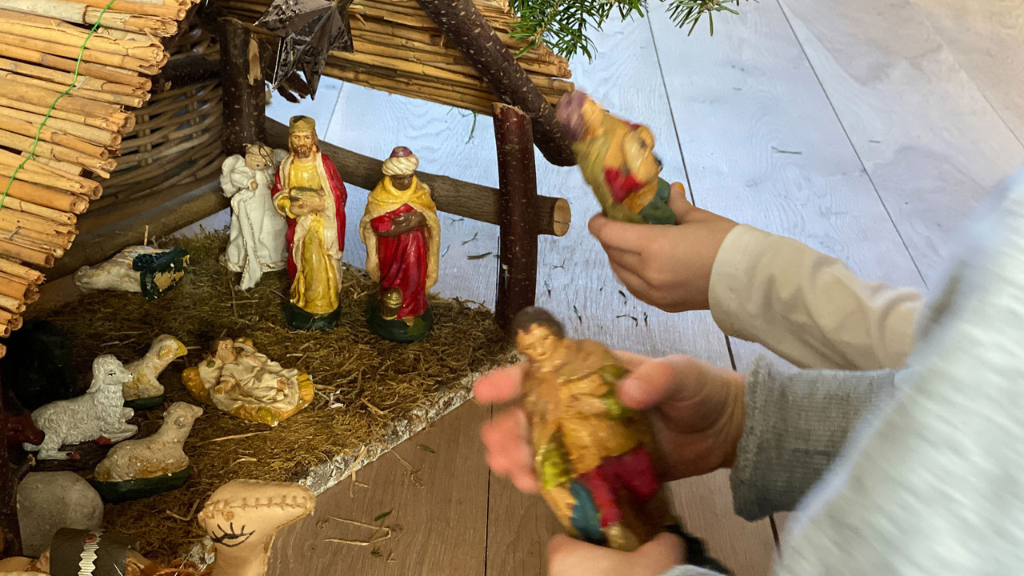
Quirky Christmas traditions across Portugal: masks, bonfires, bananas and more
If the rooster’s mass is celebrated all over the country, there are other unusual traditions that happen in specific parts of Portugal, and which people from other parts of the nation would have probably never partaken in.
In the northern interior region of Trás-os-Montes, and more specifically in the town of Varge, for example, single village boys dress up with pagan masks (as depicted in the photo here). They gather on the 25th of December and roam around jumping, dancing and rattling. The caretos de Varge, as they are known in Portugal, are believed to have their origins in Celtic tradition and have been passed on from generation to generation. Around Christmas time, the town of Varge becomes incredibly colorful and lively and it’s not in a stereotypical Christmas way at all!
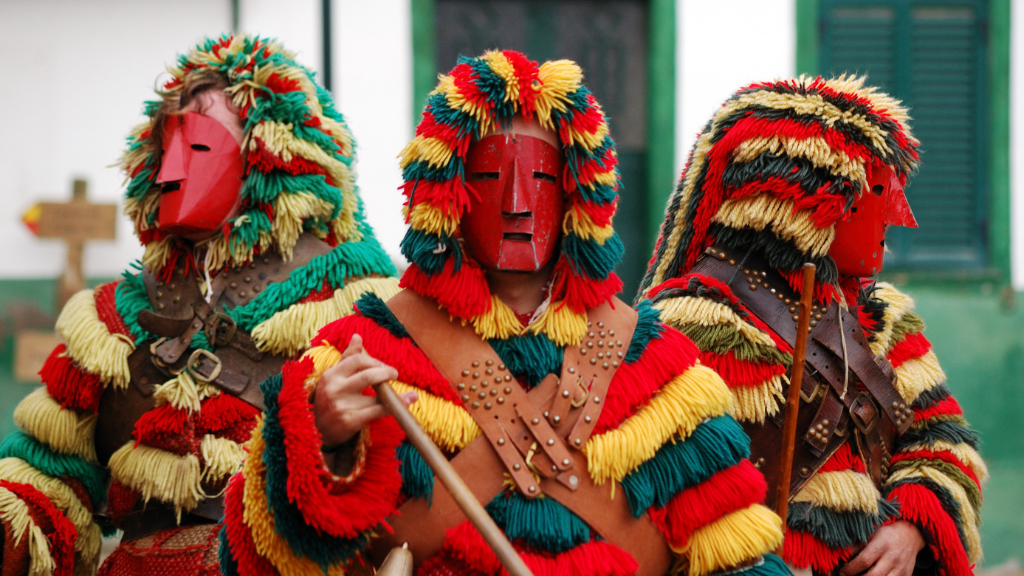
In the interior of the country, mostly in the Beira Interior region, but a little from Trás-os-Montes all the way down to the Alentejo, big bonfires are lit on the 24th of December and are meant to burn all night long. This tradition known as madeiros or madeiros de Natal has folks gathering outside the town church, prolonging the festivities beyond the rooster’s mass.
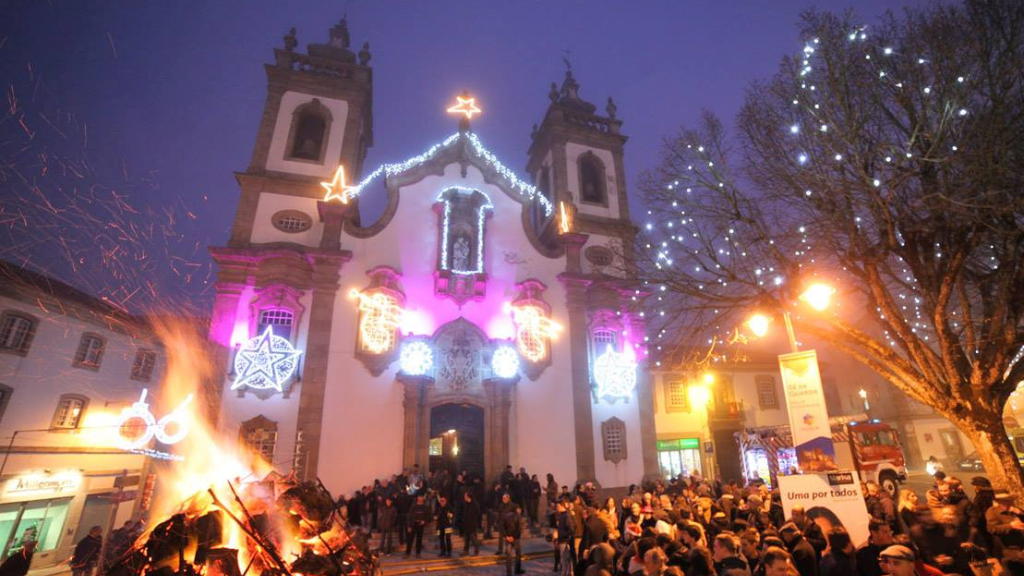
One of the most unconventional Portuguese Christmas traditions happens in Braga, in the northern Minho region, where before Christmas Eve dinner residents gather at a local tavern called Casa das Bananas, to enjoy a glass of Moscatel de Setúbal sweet wine and eat a banana. This ritual is known as bananeiro and it has thousands of Bracarense folks come together for a pre-Christmas drink, acting as the perfect excuse to wish each other happy holidays before heading home to spend time with the family.

Eating and drinking as an excuse to wish your friends happy holidays is also embraced in the islands of the Azores, where the expression “o menino mija?” (which translates as ”would you like to pee”?) serves as an invitation for your neighbors to come into your house and, not exactly use the restroom, but to instead share a drink and some sweets together. For this reason, many Azorean homes keep their doors open between Christmas and the Epiphany Day, with fully stocked tables. Inspired by this tradition, the alcohol brand Fábrica de Licores Eduardo Ferreira e Filhos, from the island of São Miguel, even now commercializes a drink called Licor Menino Mija.
Singing door to door on the 6th of January
Christmas celebrations in Portugal traditionally extend until the 6th of January, Epiphany Day, locally known as Dia de Reis. While today this date is not as celebrated as it used to be, this is a day when many people still make it a point to at least enjoy a slice of bolo rei. Back in the day and, still, in some smaller towns across the country, it’s customary for small groups of people to gather and play music door to door. This is called “cantar os reis” or “cantar as Janeiras”, that is, singing songs announcing the birth of Christ, and it usually takes place between the 1st and the 6th of January – also a perfect time to wish everyone you know a happy new year!
This serves as an excuse for friends to gather and celebrate and, of course, there had to be food and drinks involved in this musical tradition. After you perform at someone’s door, the homeowner would normally offer you something to munch on, such as sweets or dried fruits, or a quick drink. Younger people can also take this as an opportunity to ask for donations and in this way gather funds for things such as field trips and other school activities.
How do the Portuguese celebrate New Years?
If Christmas is a family oriented celebration, on New Years you are allowed to go out to party with your friends. Of course, many Portuguese still choose to do a cozy indoor celebration at home with their closest relatives, but there are no shortage of parties all over mainland Portugal and the islands, which shows us that this is a great time to go out and get wild, no matter if the weather is cold.
Portuguese New Years traditions
If you stay at home on New Year’s Eve, there should be plenty of food on the table. The menu isn’t as strict as it would normally be around Christmas, and it commonly includes a range of meat and seafood dishes according to taste and budget. You can drink wine with your meal but, to toast at midnight, sparkling wine (espumante) tends to be the preferred drink of choice.
When the clock strikes midnight, you are supposed to eat 12 raisins and, as you put each grape inside your mouth, whisper to yourself a wish for the new year. If you are a superstitious person, you wear blue underwear on this night, and make sure you also keep a bill in your pocket if one of your wishes involves a desire for more material wealth.
After midnight, in some localities, folks go out (or at least out to their balconies) and hit on pots and pans to make noise and commemorate the new year. The loud noise is also supposed to be a way to scare off the evils and bad energy from the previous year.
Going out on New Year’s Eve
If you decide to dine out on the 31st of December, it is very advisable that you book a table with as much time in advance as possible. To capitalize on such an in-demand night, most restaurants will offer set menus and package deals, including food, beverages, sparkling wine to toast at midnight, and raisins to make sure all your dreams come true.
After midnight, some venues offer live music or DJ sets, but you can also head to bars and clubs to dance the night away even when you have had dinner at home. If you’re caught in between a family dinner and heading out to party with friends, at least around Lisbon, it wouldn’t be uncommon to welcome the new year at one of the city’s many viewpoints, affording a privileged view of the fireworks display. In Lisbon, it’s also common for the city to offer free concerts in Praça do Comércio, featuring popular local artists.
All over the country, there’s no shortage of options to receive the new year revelry, from private parties to commercial establishments, to lively get-togethers promoted by city councils. In Porto, for example, crowds gather for a street party in Avenida dos Aliados (pictured above), while in the Algarve, beaches such as Praia dos Pescadores in Albufeira, host concerts and fireworks.
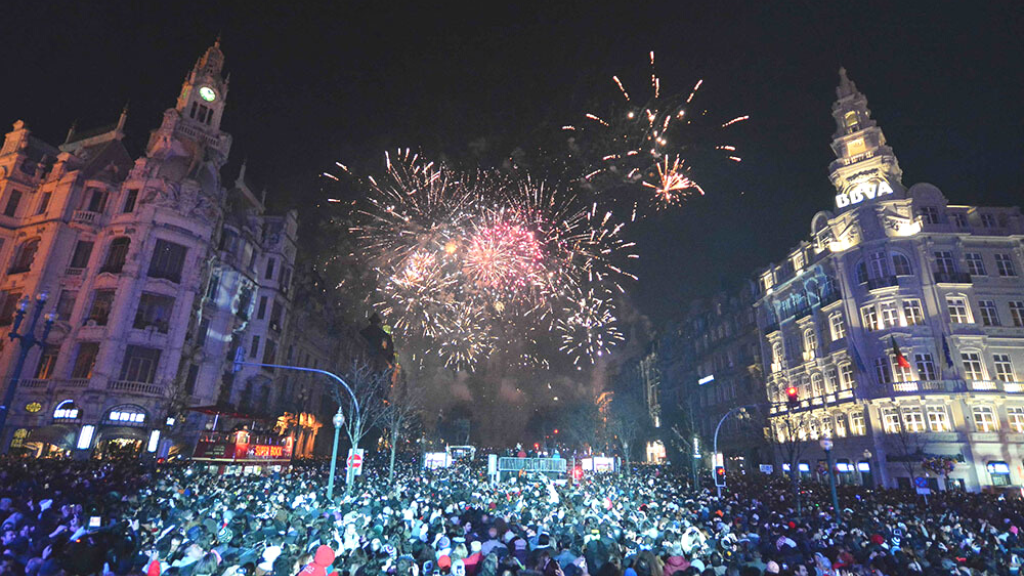
New Year’s Eve in Madeira
If you’re big into New Years celebrations and particularly fireworks, there’s perhaps no better destination in Portugal around this time of the year than the island of Madeira. On the 31st of December, the skies over the Port of Funchal, the capital city of Madeira island, are the canvas of one of the most spectacular firework shows you can ever see in our country. This fireworks show is so magnificent that it was recognised in 2006 by the Guinness Book of Records as the largest fireworks display in the world. You can enjoy it from the shore or aboard one of the many cruises which dock in Funchal to farewell the year as it draws to an end.
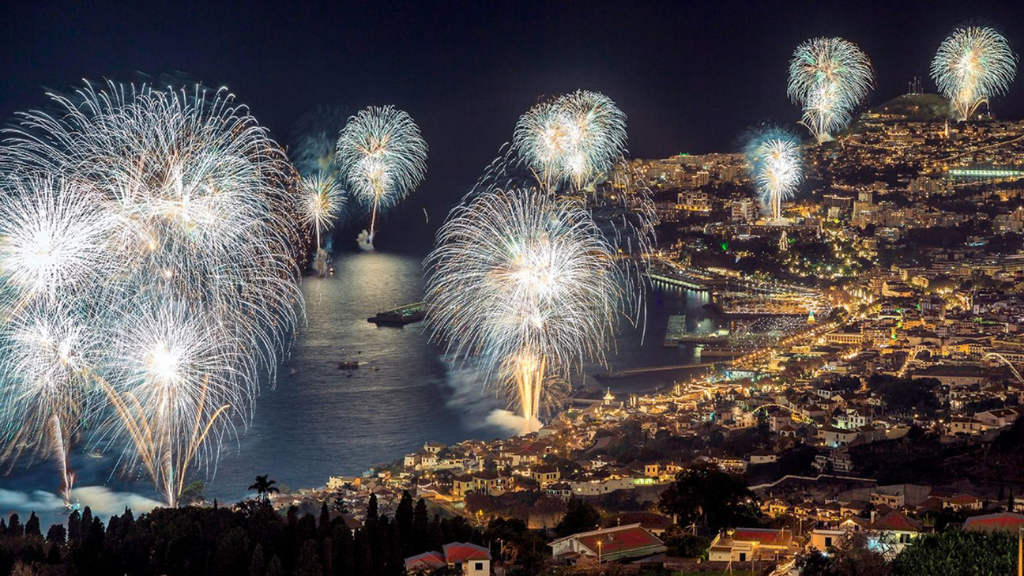
From everyone at Taste of Lisboa, we wish you Bom Natal and Feliz Ano Novo! Happy holidays and we hope to see you in Portugal in 2023. Until then, let’s keep in touch via Instagram. Say hello by tagging us: @tasteoflisboa #tasteoflisboa
Feed your curiosity on Portuguese food culture:
The most typical Christmas foods in Portugal
Set the table – Portuguese essentials
For the love of cod: a historical look behind Portugal’s obsession with bacalhau
Real people, real food. Come with us to where the locals go.
Signup for our natively curated food & cultural experiences.
Follow us for more at Instagram, Twitter e Youtube
